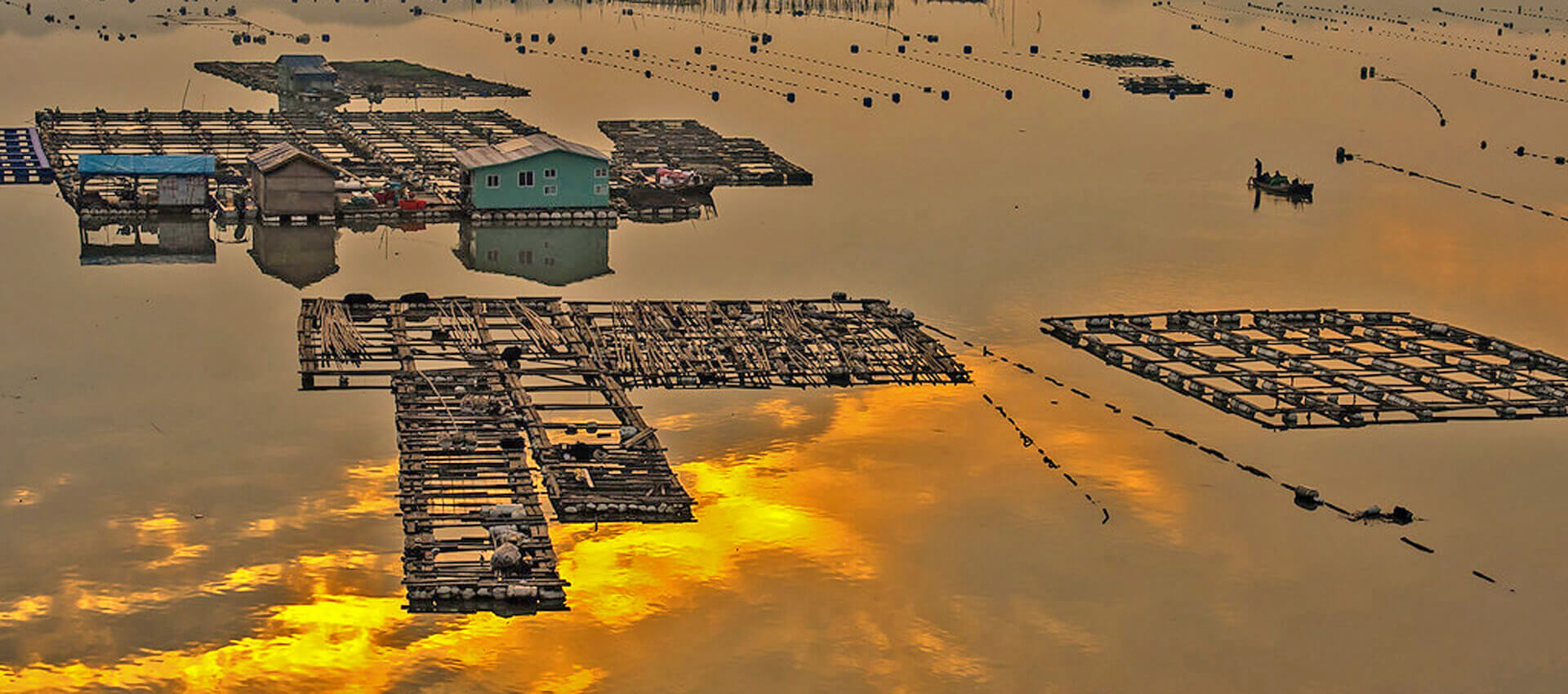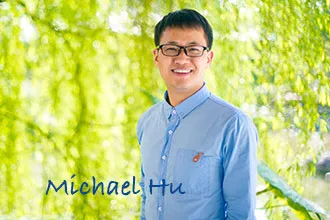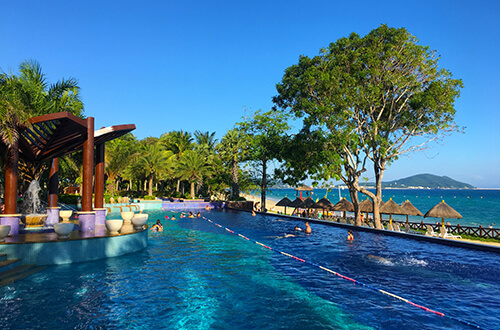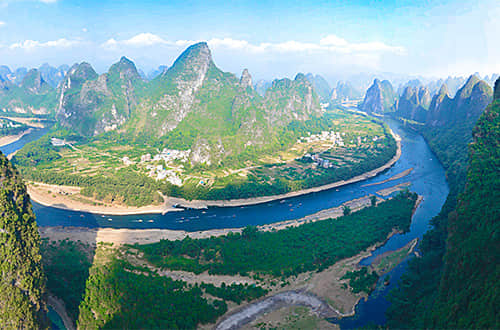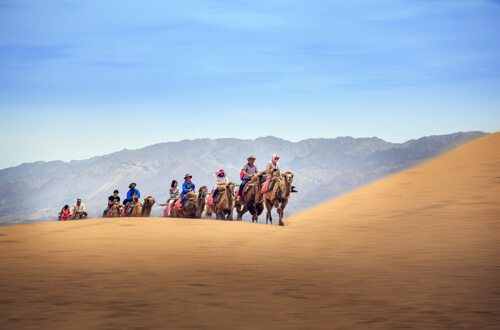9-day Fuzhou, Wuyi Mountains,Xiamen and Quanzhou Tour
Located along the South-eastern coastline in China, Fujian is the birthplace of black tea, oolong tea, and white tea. It is the starting point of the “Maritime Silk Road” and with evidence that people inhabited the area more than 5,000 years ago. Fujian has vast green landscapes (62.9% of the province is covered by forests), mountains, and islands. It is also rich in history, relics, statues, museums, and distinct local culture. There are 5 UNESCO World Heritage Sites in Fujian. The weather is comfortable all year round with an average temperature of 18 Celcius (64 Fahrenheit). Many visitors are drawn to this location for its cuisine, and if you’re a seafood lover, then Fujian is a place you should visit.
This 9-day tour focuses on Fuzhou, Wuyi Mountains, Xiamen, and Quanzhou area. It provides an excellent combination of nature, culture, and history. You will visit 3 of the 5 UNESCO World Heritage Sites in Fujian on the tour.
Highlights of The Tour
#1 Visit UNESCO World Heritage Site Wuyi Mountains and enjoy a cup of Da Hong Pao tea. 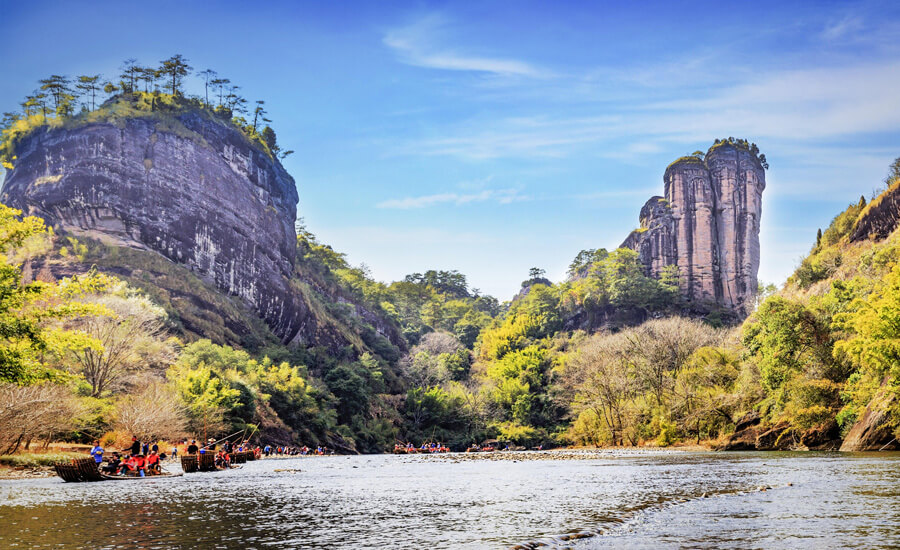
#2 Visit Hakka Tulou, or "earth building," and get an in-depth understanding of the history and life of the Hakka community. 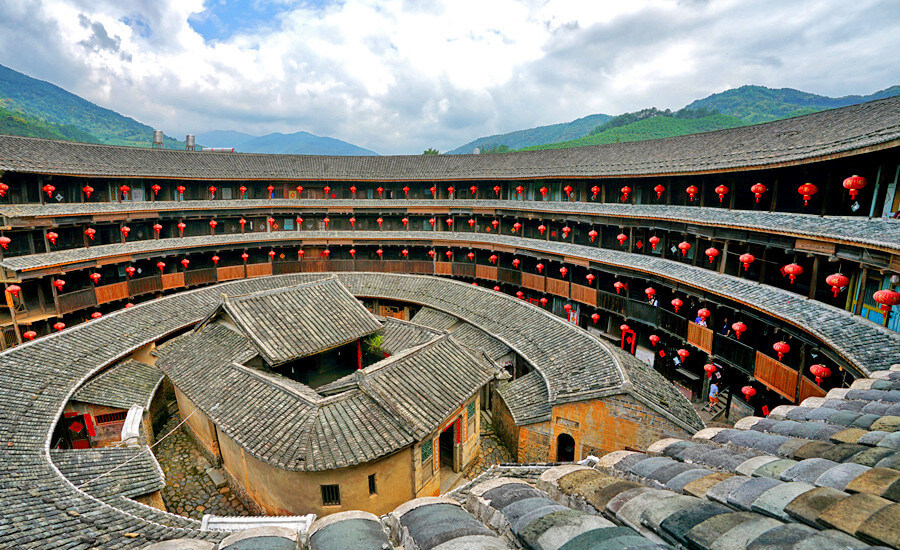
#3 Visit Quanzhou – an ancient cultural city and an important trade port during the Middle Ages. 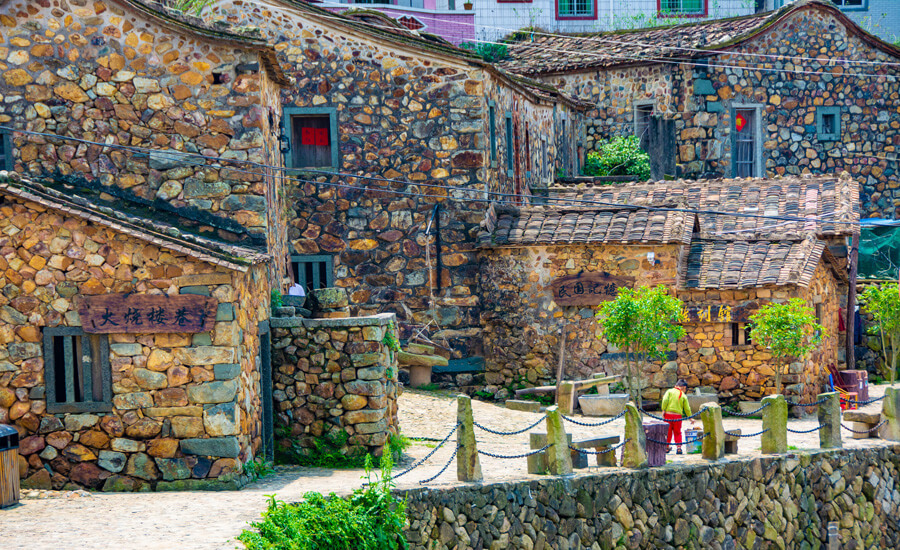
Full Itinerary
Upon your arrival to Fuzhou (Fuzhou Changle International Airport IATA: FOC or train station), your guide and driver will be waiting and ready to take you to your hotel. You will be booked at the Fuzhou Jeurong Select Hotel, close to the Minjiang River and shopping center. Fuzhou is the provincial capital of Fujian province. The city is over 2,000 years old and therefore has rich historical sites for you to explore.
After breakfast, your first destination is Gushan Mountain (Drum Mountain) and has more than 100 scenic spots, including pavilions, temples, caves, and peaks, featuring an impressive 300 inscriptions on the cliff face left by literati in ancient times, including 109 from the Song Dynasty (960-1279). There is also a visit to Yongquan Temple famous for its pottery pagodas, intricate architecture, and ancient Buddhist scriptures.
After lunch, you will head to Fuzhou’s West Lake Park which is the best-preserved classical garden in Fuzhou. From there, a visit to the Lin Zexu Memorial Hall, Lin Zexu (1785-1850) was an official during the Qing dynasty, known for his efforts to constrain the opium trade which lead up to the First Opium War (1839–42) between Britain and China. The Memorial Hall was his residence at that time, with each room beautifully furnished and with several rooms leading into the small gardens with pools and zigzag bridges.
Afterward, you will head to Sanfang Qixiang, which means “three lanes and seven alleys”, a historic residential district in the heart of the city, with buildings dating back to the Ming and Qing dynasties (1368-1911). Most of these typical traditional Fujian-style mansions with halls, gardens, and studies were residences of famous Fujian people, such as Shen Baozhen, Yan Fu, Lin Juemin, Lin Xu, Bing Xin, Lin Shu, to name a few. Two of the visits will be to the former residences of Lin Juemin (a democratic revolution martyr) and Bing Xin(a famous writer).
After breakfast, you will take the bullet train to Wuyishan, about a 1.5-hour journey. With an area of 70 square kilometers, the area has one of the world’s largest and best-preserved sub-tropical native forests in the world. As a UNESCO World Heritage Site, the Wuyi Mountains are home to dramatic gorges, a sprinkling of atmospheric temples and monasteries, and the most extensive biodiversity in southeast China. Hiking trails and the zigzagging Nine-Bend Creek crisscross this alpine retreat, passing through lush forests and deep canyons. The region is also known for cultivating oolong tea.
Upon your arrival at the Wuyishan train station, your guide and driver from Wuyishan will take you to Wuyi Mountains, and visit the Yongle Temple, a Buddhist temple, famous for tea grown and brewed by the resident monks.
Then you will head to visit Da Hong Pao Tea (literally Big Red Robe Tea). Da Hong Pao is the name for one of the two famous teas that originated within Mount Wuyi. The other is Lapsang Souchong. Da Hong Pao, is a semi-fermented tea of the oolong variety. The Da Hong Pao trees are six tea trees that grow on the cliff of Jiulongke. They are considered to be the origin of the tea leaves which in the story of Da Hong Pao miraculously cured the emperor’s wife.
Afterward, you will visit the Water Curtain Cave. The cave is a huge rock cave and one of the famous mountains in Wuyishan. A water stream flows from the top forming a water curtain and offers great views of the tea gardens. Along the rock, you can find some remains of early settlements.
You will continue the tour at Wuyi Mountain Scenic Area, and visit Tianyou (Heavenly Tour) Peak, Yunwo (Cloud Nest), Chadong (Tea cave), Jiesun (Jointed Bamboo Shoot) Peak. In the afternoon, you will take a bamboo raft through the Nine Bend River. The river flows through the canyon and has a total of nine bends giving you different views of the surrounding landscape. After the raft ride, you will visit Song Dynasty Street where you can browse along with the shops as you head toward the Wuyi Palace, the most ancient Taoist temple in the area, that has undergone destruction and reconstruction.
In the morning, a visit is arranged to Xiamei Village, which was the beginning of the Ten-thousand Mile Tea Road. During the Qing Dynasty, teas were traded through this north-south route, reaching the borders of Russia and Mongolia to the north and Macao to the south. The village has retained its ancient look with the traditional gateway. Inside the village, one can visit some mansions which once belonged to rich tea merchants. Calligraphy and wooden furniture are on display. You can also sit and enjoy the organic tea in the village.
After lunch at a local restaurant, you will take the bullet train to Nanjing which is 3 hours away. You will stay overnight at the Qingdelou Inn, an authentic Tulou, built-in 1743. Each room has an ensuite, with hot/ cold water for shower and heating in the winter.
Today you will visit tulous. A tulou is an earthen building, built by the Hakka people, a Chinese ethnic group, in the 13th and 20th centuries. Tianluokeng Tulous was regarded as the symbol of Fujian Tulous and a must-see attraction. There is a square tulou surrounded by four round tulous, and were given the nickname "four dishes and one soup".
Afterward, there is a visit Taxia Village, a riverside village with stone bridges, waterwheels, traditional housing including some round Tulous make this village quaint, quiet, and picturesque. From there, you will head to Hekeng Tulou Cluster which served as a filming location for Mulan’s hometown. After the tour, you will be driven to Xiamen (Amoy), about a 3-hour drive. Upon arrival in Xiamen the rest of the day is free.
In the morning, you will take a 25-minute ferry to Gulangyu Island, a UNESCO World Cultural Heritage Site. Only covering an area of 1.88 square kilometers, it was a frontier stronghold for many countries looking to enter China after the First Opium War (1839-1842). Its heritage buildings are well-preserved, offering a unique example of a modernized international community at the beginning of the 20th century. The tour will include a visit to the Shuzhuang Garden and Piano Museum.
After lunch, you will head to the Hulishan Fortress, built-in 1891. The fortress houses a barrack, secret tunnel, tower, sentry platform, ammunition depot, trench, and castle. The German-made Krupp Cannon is the largest existing coast cannon of its kind in the world. There is a visit to Nanputuo Temple, one of the most famous Buddhist temples in China, founded in the Tang Dynasty, with over 1000 years of history containing three main halls and one pavilion.
Finally, the last part of your tour for the day will be to Huan Dao Road. This coastal road starts from Xiamen University to Wuyuan Bay, giving you great views of the sea and of Gulangyu Island. This is a popular stretch for biking, strolling, playing beach volleyball or just enjoying the sea breeze.
Today is a tour to Quanzhou, where you will also stay the night. It is a 1.5 hours drive from Xiamen. Located on the southeast coast of China, the city of Quanzhou (Zayton) was one of the most important Chinese ports along the historic Maritime Silk Roads. Commercial and cultural interaction between the city and other regions, particularly around the South Sea, can be dated to as early as the Chinese Southern Dynasties of the 6th century CE. Sailors, merchants, and explorers came together in Quanzhou from across many regions of the world. This is illustrated by the diversity of historic religious sites and monuments in the city of Quanzhou.
On the way to Quanzhou, there is a visit to the only Manichaean temple in China – Cao’an Temple which hosts the only stone statue of the Manichaean prophet, Mani. There is also a visit to the Kaiyuan temple, with its twin pagoda towers, which is one of the oldest Buddhist temples in China, with Hindu architectural components that can be found in this temple. From there, you will visit the Qingjing Mosque which is China's oldest mosque and stands as a witness to the long-lasting interaction between Quanzhou and the Arab-Islamic world.
A visit to Qingyuan Mountain Park stands the Laojun statue, which is the biggest Chinese stone statue of its kind. Laojun was also known as Lao Tzu, and the reputed author of the Tao Te Ching, the founder of philosophical Taoism, and a deity in religious Taoism and traditional Chinese religions.
Today’s tour finishes with a visit to the Luoyang Bridge, first built in 1053, the earliest existing cross-sea beam-stone bridge in China.
Your last day of the tour will take you to Chongwu Ancient Town, built-in 1384 to fight against Japanese pirates. It is the only extant stone-walled city in China. The town is also famous for its Hui-an women’s ancient traditional costumes. The tour will include a visit to Xunpu Village, a small coastal fishing village, widely believed to be a starting point of the ancient Maritime Silk Road leading to Africa. The village is famous for its "Oyster Shell Houses" and women decorate their hair with exquisite hairpins and colorful flowers.
This is where your tour will end, and you will be taken to the train station or Quanzhou Jinjiang International Airport (JJN).
Tour Notes:
Make your own transport arrangements to Fuzhou, and leave the rest of the tour plans for us. This region takes you on a journey through time with its once ancient Maritime Silk Roads, ancient villages with unique architectural buildings, and trails through mountains.
Featured Hotel
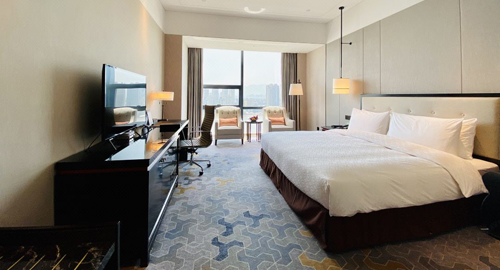
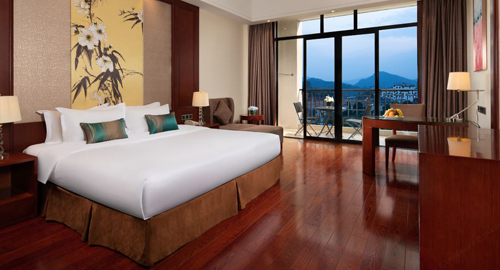
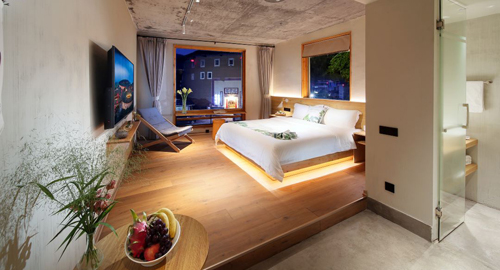
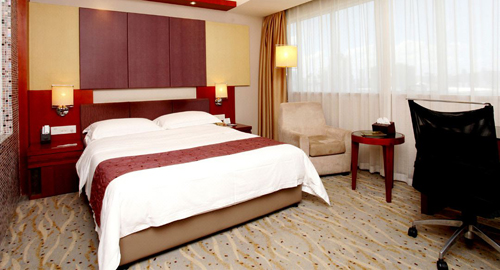
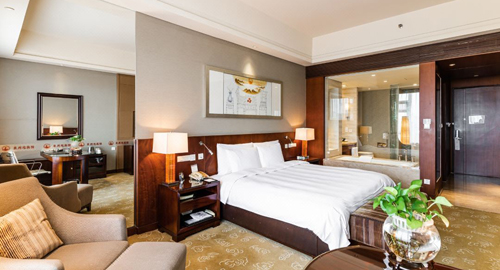
What’s Included
- Experienced tour guides
- Entrance fee to all spots listed in the itinerary
- Well selected hotel accommodation
- Meals mentioned in the itinerary
- Expert drivers and comfortable vehicles with air-conditioning
Wechat & WhatsApp: +86-13471279378
